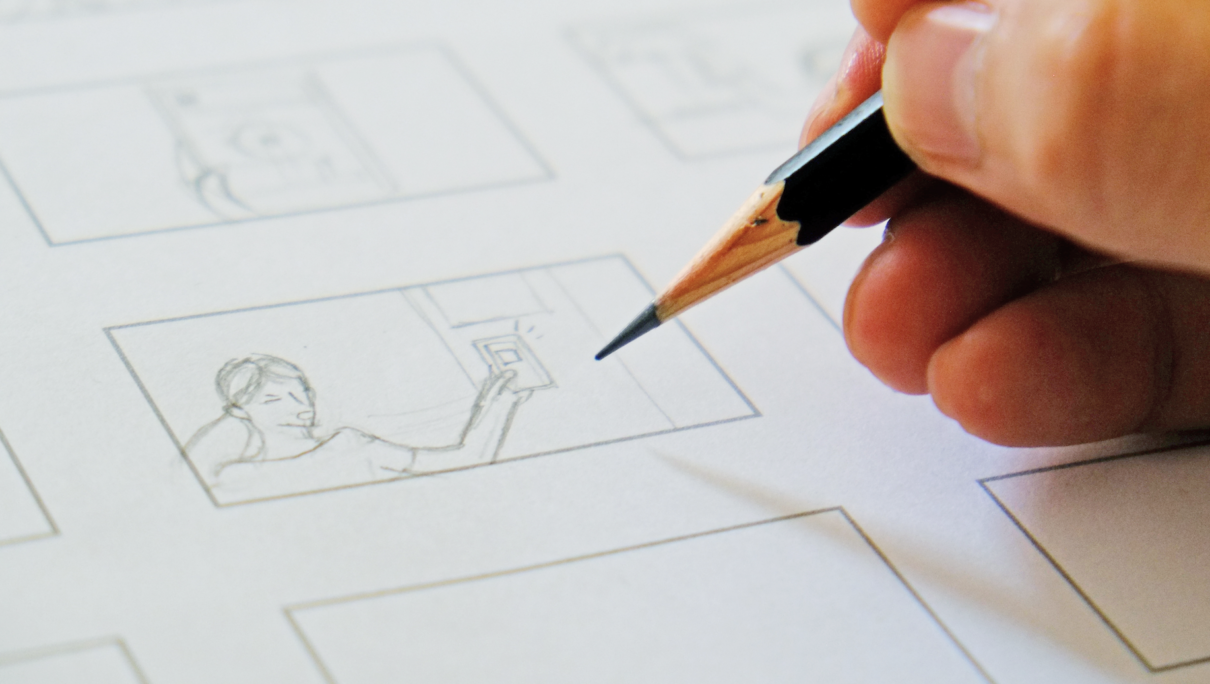In the dynamic landscape of creative work, where ideas are the seeds of innovation, storyboarding emerges as a superhero tool that translates visions into tangible narratives. Join us as we explore the undeniable power of storyboarding and how it serves as a bridge between ideas and client understanding, revolutionizing the creative process.
Understanding the Essence of Storyboarding
Storyboarding is akin to architecting a visual roadmap. It’s the meticulous art of breaking down complex ideas into digestible, sequential scenes. Each frame represents a moment, an emotion, or an interaction, forming the blueprint for the final masterpiece. Just as a novelist outlines chapters before penning a novel, storyboarding brings structure to creative concepts.
From Abstract to Concrete: Breathing Life into Ideas
In the initial stages of ideation, ideas often hover in the abstract realm. This is where storyboarding works its magic. By translating concepts into visuals, designers transform vague notions into concrete scenes. This process not only clarifies the creator’s vision but also empowers clients to see the journey from inception to execution.
Storyboarding is more than sketches on paper; it’s a language that speaks directly to clients. It bridges the gap between the creative realm and the client’s expectations. Clients, who might not be well-versed in design jargon, can effortlessly grasp the flow and essence of the project through a storyboard. It becomes a collaborative tool that encourages open conversations and ensures everyone is on the same creative page. The power of storyboarding extends to the execution stage. With a well-defined visual plan in hand, the creative team can navigate the project with precision. Deadlines become more attainable, revisions more streamlined, and the end product more aligned with the initial vision. Storyboarding serves as a compass that guides the ship to the intended destination.
Misinterpretations can often derail a project. Storyboarding is the remedy to this creative challenge. It offers a clear visual narrative that minimizes ambiguity and miscommunication. Clients can visualize the end product long before it’s completed, reducing the likelihood of unwelcome surprises. Storyboarding is not only a creative practice but also a cornerstone of excellent customer service. By presenting a well-structured storyboard, agencies convey a dedication to the client’s vision. It showcases an agency’s commitment to transparency, collaboration, and delivering beyond expectations.
Transforming Visions into Reality
In the fast-paced world of creativity, storyboarding emerges as a beacon of clarity and collaboration. It’s a process that transforms abstract concepts into visual tales, connecting creators, clients, and ideas in an intricate dance. By embracing the power of storyboarding, creative agencies can unlock a transformative tool that fuels inspiration, fosters collaboration, and brings even the most complex ideas to vivid life.


The standard chunk of Lorem Ipsum used since the 1500s is reproduced below for those interested. Sections 1.10.32 and 1.10.33 from \”de Finibus Bonorum et Malorum\” by Cicero are also reproduced in their exact original form, accompanied by English versions from the 1914 translation by H. Rackham.